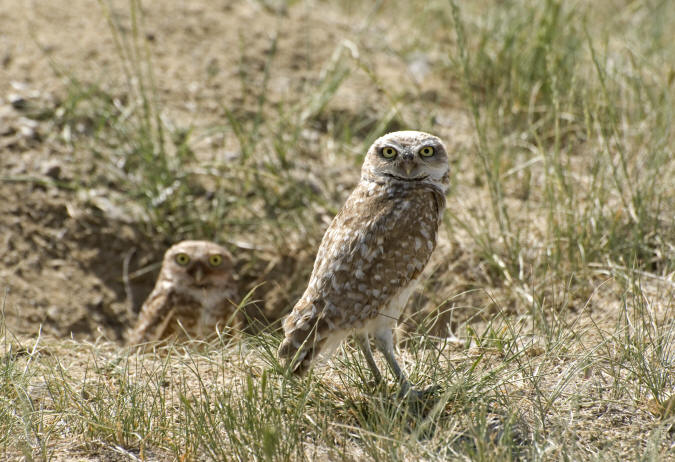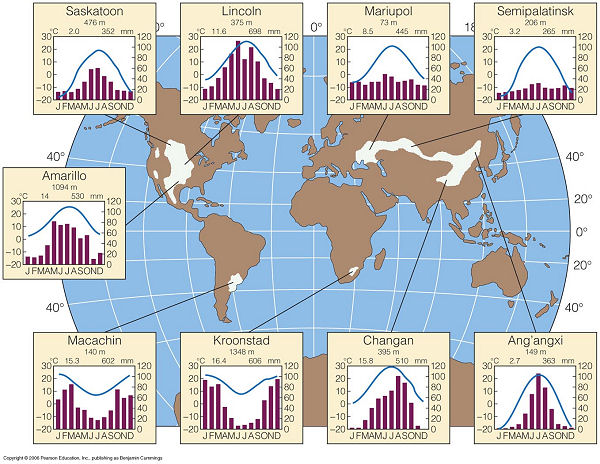There are a lot of different grasslands on Earth. Some grasslands are
tropical and some are dry grasslands.
The prairies of the Midwest United States have tall-grasses and short-grasses. The temperature is moist and humid west of the Mississippi. Because of this the grasses can grow up to even 10 feet! Summers are warm and humid. Winters are cold but not extremely cold. The farther west and in the interior of the country, the temperatures become drier. Moisture from the Pacific Ocean becomes blocked by the mountains. Short-grass prairies are found here. Summers are hot and winters very cold. There's no natural barriers, like trees, so it is constantly windy. Grasses with deep roots keep the soil from blowing away. Most animals have adapted to the open, treeless prairie by digging burrows. Even owls, like the Burrowing Owl, use the holes dug by prairie dogs as a place to nest. The average temperatures for the prairie in January is 20° F, and 70° F in July. Annual precipitation is about 10-30 inches.
(Burrowing Owls shown below with one owl in a "nest".)

The Savanna is a
tropical grassland in Africa. The Savanna has a very hot,
wet season when warm, moist air from the equator moves in.
This hot season is followed by a cooler dry season that can last for 8
months or more. Hot, dry air moves in from the Sahara. It is a little
cooler by a few degrees Celsius because there's no moisture
to trap the sun's radiant energy, and most of the heat
escapes into space.
Another southern hemisphere grassland is the Pampas of Argentina. Moist, tropical air dominates this area and there is a lot of rain. Here tall-grass varieties of grasses grow very well.
The Steppes have a cold, dry climate. Here you find short-grass type of plants. The Himalayas block warm, moist air from the Indian Ocean, so there is very little precipitation. Nothing blocks arctic winds though, so winters are very cold and windy.
